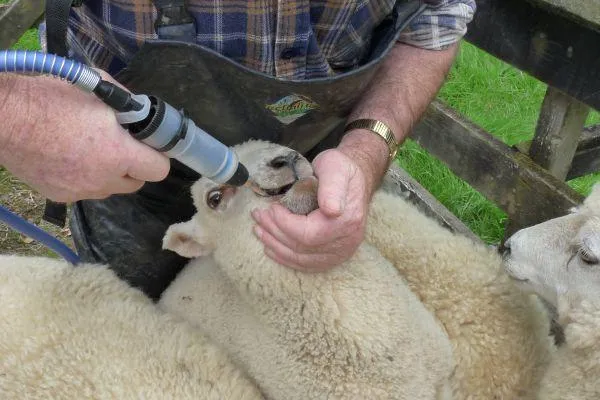
Internal parasites in cattle, sheep and goats – an update
Controlling internal parasites in livestock is a complex business. Although there's been good progress in understanding how to manage worm burdens, drench resistance is now widespread and makes the job more difficult. For lifestyle farmers, there is no one-size-fits-all plan.
This guide outlines the core principles of worm control to help you assess your situation and make informed decisions.
Risk factors that increase worm problems
Can you say yes to any of the following? These conditions raise the risk of significant worm burdens on your block:
High stocking rate
Grazing animals very close to the ground
Running one species only (e.g. sheep-only or cattle-only)
Young or lightweight stock
Poor nutrition or low body condition
Stress (such as cold exposure, footrot, or other illness)
Warm, humid weather (ideal for worm egg survival on pasture)
Conditions that help reduce worm pressure
On the other hand, worm burdens are less likely to build up where:
Stocking rates are low
Pasture is not grazed too short
Grazing is mixed (e.g. cattle with lambs, or sheep rotated with horses)
Animals are mature, well-fed, and in good condition
The weather is cold and frosty or hot and dry (which reduces larval survival)
Signs your animals may be affected by worms
By the time clinical signs appear, your animals may already have experienced reduced growth or poor condition. Watch for:
Diarrhoea or dags
Poor growth or weight loss
Pot belly and anaemia
Reduced appetite
In severe cases, bottle jaw (a soft swelling under the jaw caused by protein loss)
Get veterinary advice
Worm control strategies should be tailored to your property. A vet can help you develop a plan and identify:
Whether faecal egg counts are useful in your situation
Other possible causes of poor condition (e.g. bacterial infections, lush spring grass)
The presence of drench resistance on your block
Faecal egg counts are helpful but not perfect. Some worm species lay few eggs, even when present in large numbers.
Understanding drenching
The term “drenching” now includes oral, injectable, and pour-on treatments using anthelmintic drugs.
There are five main families of drench. Most sheep drenches now contain a combination of two or more types.
General drenching advice:
Never under-dose. Use the correct amount for the heaviest animal in the group.
Weigh your animals or use weighbands for cattle.
Avoid pour-on drenches. These are less effective and more likely to contribute to resistance.
Observe withholding periods before selling meat or milk.
Use strategic drenching for young animals to support them while they build immunity.
Healthy adult sheep and cattle often do not need routine drenching, as they develop good parasite resistance with age. Goats are the exception.
Want to build your confidence in parasite management? Our Keeping Sheep course and Keeping Goats course both cover worm control, drenching, and seasonal health risks.
Species-specific drenching
Sheep
Lambs should generally be drenched every 4 to 6 weeks from weaning (around December) until May.
Goats
Most goat drenches are off-label, so seek veterinary advice. Goats typically do not develop strong age-related immunity, so may need drenching every year, even as adults.
Cattle
Young cattle may require several drenches during their first summer and autumn. Adult cattle usually develop immunity and do not need routine drenching.
Drench resistance and what to do
If worms on your farm are resistant to one or more drench families, treatments will be less effective.
Your vet can arrange tests to check whether your drenches are still working. If resistance is present or suspected:
Use combinations of anthelmintics, not single-family drenches
Follow your vet’s guidance closely
Refugia: why not drench everything
In some cases, your vet may recommend leaving some robust animals un-drenched so they shed non-resistant worm eggs onto pasture. This reduces the proportion of resistant eggs in the environment.
This approach is called refugia and is a key principle in slowing drench resistance. (See Dr Clive Dalton’s article on this topic elsewhere on this site.)
Quarantine drenching: essential for new arrivals
To avoid importing resistant worms onto your property:
Quarantine drench all incoming animals with a triple combination product (vet advice required)
Hold them off pasture or in a quarantine paddock for at least 24 hours
This is especially important if your property is currently free of resistance.
Final thoughts
Worm control is not just about routine drenching. It requires observation, pasture management, and targeted treatments. Work with your vet to develop a strategy that fits your land, stock, and risk level.
For more support, see our full range of livestock courses tailored for lifestyle farmers.

